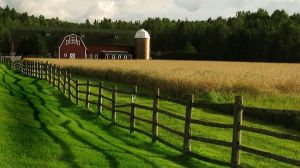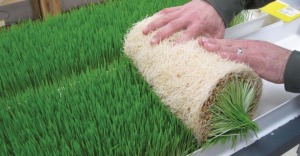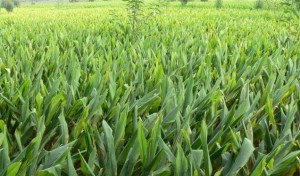Also known as urban agriculture, urban farming is a way for urban inhabitants to produce their own food, or have access to local foodstuffs. The tradition of urban farming is growing in fame in urban regions across North America. With the several advantages of urban agriculture and all that local food production has to provide, it is essential that we carry on to spread consciousness regarding how communities and individuals can institute a base of enhanced health, social communications, and economic opulence.
Here we’ll have a look at 5 advantages of urban agriculture:
 • Improves food-safety – food safety is having access to and being able to afford wholesome, safe foodstuff – and enough of it. This is a main worry for several households worldwide. Fortunately, urban agriculture contributes to better food security.
• Improves food-safety – food safety is having access to and being able to afford wholesome, safe foodstuff – and enough of it. This is a main worry for several households worldwide. Fortunately, urban agriculture contributes to better food security.
• Makes a sense of belonging – urban agriculture is 1 means to bring urban inhabitants together to institute a sense of community amongst people otherwise self-governing and, in several cases, isolated.
• Produces wholesome food – you get healthier, fresher food, herbs, fruits and vegetables – and are more likely to eat what is in the season, when you eat what is produced on an urban farm.
• Offers a learning prospect – urban farms offer city inhabitants an opportunity to grow their own foodstuff, and learn in the process. They can also learn about different gardening methods, the best mineral solutions, needed sunbeams, and controlling heat, among other things.
• Makes effective use of land – you can effectively make use of the land you do have to feed the people. Consider vertical or rooftop gardens: they take up minimum space but produce loads of fresh, wholesome food. Several hydroponic systems are installed perpendicularly, to fit anywhere you want even indoors!





 One of the biggest obstructions that we encounter while cultivating sprouts for our livestock is producing a mold-free stuff while still upholding a higher level of sprouting. What makes this challenge is the fact that both sprouting seeds & fungal pathogens flourish in high moisture, warm conditions. By employing hydroponic NFT skill, newer fodder systems decrease ambient water and moisture loss often concerned with older misting type systems. This decrease in ambient moisture and enables us to employ these systems in a little warmer condition, motivating fertilization, but not mold expansion. Some of the most effective hydroponic fodder systems are operated in exceedingly regulated conditions employing ecological control tools often seen in indoor cultivation complexes and green house.
One of the biggest obstructions that we encounter while cultivating sprouts for our livestock is producing a mold-free stuff while still upholding a higher level of sprouting. What makes this challenge is the fact that both sprouting seeds & fungal pathogens flourish in high moisture, warm conditions. By employing hydroponic NFT skill, newer fodder systems decrease ambient water and moisture loss often concerned with older misting type systems. This decrease in ambient moisture and enables us to employ these systems in a little warmer condition, motivating fertilization, but not mold expansion. Some of the most effective hydroponic fodder systems are operated in exceedingly regulated conditions employing ecological control tools often seen in indoor cultivation complexes and green house.